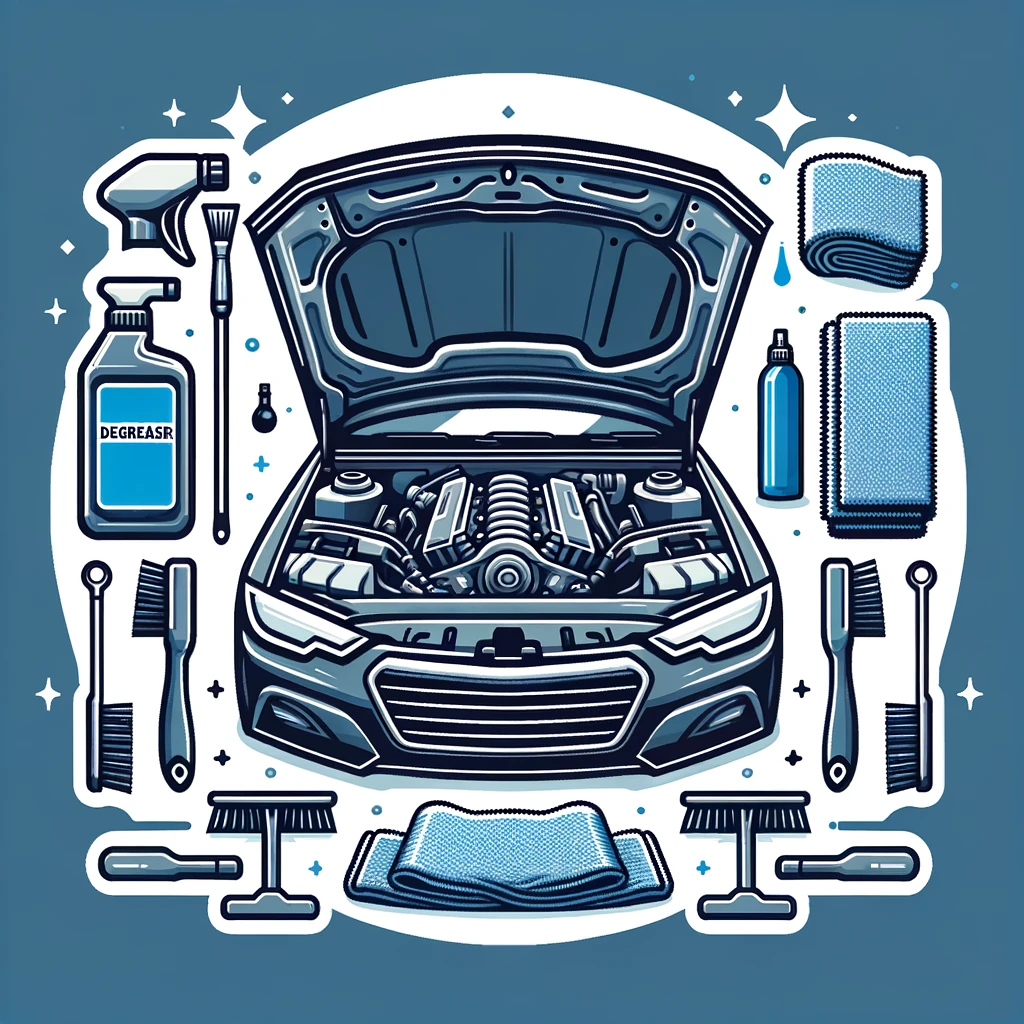Keeping your engine bay clean is not just about aesthetics; a clean engine can run cooler and is less likely to have dirt and debris cause mechanical issues. This guide will walk you through the process of cleaning your engine bay safely.
Introduction
An engine bay is like the heart of your vehicle, and keeping it clean is crucial for both maintenance and value. Cleaning your engine bay can be intimidating, but with the right tools and techniques, it can be a rewarding process.
What You’ll Need
- Engine degreaser
- Plastic bags and tape (for covering sensitive components)
- Soft brushes (different sizes)
- Microfiber cloths
- Hose with spray nozzle or pressure washer (set to a safe level)
- Compressed air (optional, for drying)
Steps to Clean Your Engine Bay
Preparing Your Engine
- Cool Down: Ensure your engine is cool to the touch before starting. A warm engine is okay as it can help loosen dirt, but it shouldn’t be hot.
- Remove Loose Debris: Remove any leaves, twigs, or visible debris by hand or with compressed air.
- Cover Sensitive Areas: Use plastic bags and tape to cover electrical components, including the battery, ignition wires, and engine control unit.
Applying Degreaser
- Spray Degreaser: Apply a liberal amount of engine degreaser from the bottom up to avoid streaking. Focus on greasy areas but avoid direct application on sensitive components.
- Let It Sit: Allow the degreaser to work according to the product instructions, typically around 3-5 minutes.
Scrubbing
Use various sizes of soft brushes to scrub the engine bay gently. Reach different areas without applying excessive force which might displace or damage components.
Rinsing
Use a hose or a pressure washer set to a low pressure to rinse the engine bay thoroughly. Ensure all soap and degreaser are washed away.
Drying and Finishing Up
- Dry: Use microfiber cloths to dry accessible areas. Compressed air can be used to blow out water in tight spaces.
- Remove Covers: Take off all plastic coverings from the electrical components.
- Final Wipe: Give everything a final wipe and check for any areas that might need a touch-up.
Frequently Asked Questions
Why is it important to clean my engine bay?
Cleaning your engine bay can help identify any leaks or issues early, prevent the buildup of harmful materials that can degrade components, and potentially increase the resale value of your vehicle by showing well-maintained internals.
Can water damage the engine during cleaning?
If done carefully, cleaning your engine with water should not damage it. It’s important to protect sensitive components such as the alternator, electrical connections, and the air intake with plastic bags before starting.
What type of degreaser should I use for my engine bay?
Use a degreaser designed specifically for automotive engines. These products are formulated to cut through oil and grease without damaging engine components.
How often should I clean my engine bay?
The frequency can depend on your driving conditions and environment. Generally, cleaning the engine bay once or twice a year is sufficient, but more frequent cleaning may be necessary if you drive in dusty or dirty environments.
Can I use a pressure washer to clean my engine bay?
Yes, but it should be used with great care. Set the pressure washer on a low setting and keep the nozzle at a distance to prevent water from being forced into sensitive areas.
What should I do if I notice any mechanical issues while cleaning?
If you discover any leaks, frayed wires, or other mechanical issues while cleaning your engine bay, it’s advisable to consult with a professional mechanic to get these issues addressed as soon as possible.
Is there anything I should do after cleaning my engine bay?
After cleaning, it’s a good idea to run the engine for a few minutes to help dry any moisture in components. Additionally, check all fluids levels and top them off if necessary.
Conclusion
Cleaning your engine bay is a task that not only improves the appearance of your vehicle but also its functionality and resale value. Regular cleanings can prevent build-up that might lead to more serious issues.
